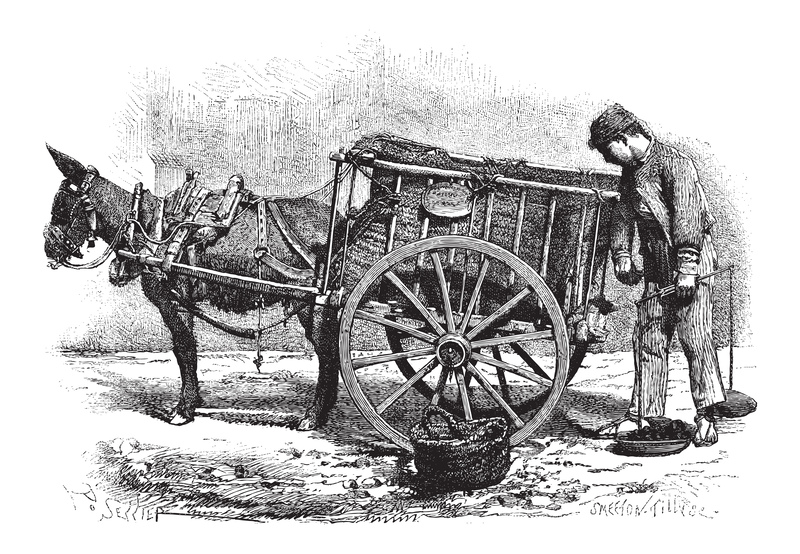Safeguarding Nature by Managing PPE Waste Wisely
The global increase in Personal Protective Equipment (PPE) usage over recent years, particularly due to the COVID-19 pandemic, has brought about an unexpected environmental challenge. While PPE plays a critical role in protecting public health, the dramatic surge in single-use masks, gloves, face shields, and gowns has resulted in millions of tons of additional waste. Thoughtful PPE waste management is now not only a public health necessity but also an environmental imperative. Understanding how to manage PPE waste effectively is crucial for protecting ecosystems, wildlife, and our future.

Understanding the Impact of PPE Waste on the Environment
What Is PPE Waste and Why Is It a Problem?
PPE waste refers to used and discarded protective materials such as surgical masks, N95 respirators, disposable gloves, gowns, and face shields. These items are predominantly made from non-biodegradable plastic polymers including polypropylene, polyethylene, and PVC.
- Persistence in environment: These plastics can take hundreds of years to break down.
- Wildlife hazards: Improperly discarded PPE can entangle animals or be ingested, leading to injury or death.
- Microplastic pollution: As PPE degrades, it breaks into microplastics, contaminating soil and water.
- Unsanitary litter: Used PPE can harbor pathogens, posing health risks to waste handlers and the public.
Statistics on PPE Waste Generation
According to a study published in Nature Sustainability, an estimated 129 billion masks and 65 billion gloves were used globally every month during the peak of the pandemic. This surge led to a parallel rise in PPE litter, visible on city streets, beaches, and even remote natural habitats.
Best Practices for Responsible PPE Waste Management
Understanding PPE Waste Streams
Not all PPE waste is the same. Waste streams vary based on material type, contamination risk, and potential for recycling. Identifying these streams is the first step toward effective PPE waste management.
- General PPE waste: Includes materials not contaminated by hazardous agents, such as daily-use face masks by the public.
- Healthcare PPE waste: Waste generated from hospitals, clinics, and testing sites often requires special handling due to exposure to infectious agents.
The Hierarchy of PPE Waste Management
Applying the waste management hierarchy to PPE can minimize environmental impact:
- Reduce: Opt for reusable PPE wherever possible, especially in non-medical settings. Choose products with minimal or eco-friendly packaging.
- Reuse: Use washable, reusable cloth masks and face shields. Follow manufacturers' care guidelines to reduce cross-contamination risks.
- Recycle: Some PPE items, if not contaminated, are recyclable. Check local guidelines for recycling programs or special PPE recycling bins.
- Safe Disposal: When items can't be recycled, dispose of them in accordance with local hazardous or medical waste protocols.
Innovative Solutions for PPE Waste Reduction and Recycling
Developing Recyclable and Biodegradable PPE
New technologies are transforming the way we think about PPE production and disposal:
- Biodegradable masks and gloves: Companies are developing PPE using materials like polylactic acid (PLA), which break down naturally.
- Recyclable PPE: Advanced materials allow worn-out PPE to be processed into road-building materials, park benches, and new products.
PPE Collection and Recycling Programs
Initiatives across the globe are reshaping PPE disposal management:
- TerraCycle's PPE Recycling Boxes: Businesses and organizations can install special bins to collect used masks and gloves for industrial recycling.
- Local pilot programs: Cities like Toronto and Paris are trialing PPE-specific waste collection points to reduce street litter and direct waste away from landfill.
Turning PPE Waste into Energy and Resources
Pyrolysis and other waste-to-energy processes are being explored for safe disposal of contaminated PPE waste while extracting value in the form of energy or raw materials:
- Pyrolysis: A process that converts PPE plastics into fuels or industrial feedstock, reducing the burden on landfills.
- Cement kilns: Some regions utilize PPE waste as a supplemental fuel in cement production, offering a closed-loop disposal alternative.
Community Engagement and Public Education
The Role of Individuals in Reducing PPE Pollution
Everyone can play a part in managing PPE waste responsibly:
- Always dispose of PPE in closed bins: Never litter masks or gloves outdoors, as they can easily enter waterways and landscapes.
- Separate PPE from recyclables: Avoid contaminating regular recycling by ensuring PPE waste goes to the proper waste stream.
- Participate in local PPE collection drives: Support municipal or community initiatives aimed at safe PPE collection and recycling.
- Spread awareness: Educate family, friends, and colleagues about the environmental risks of PPE pollution and responsible disposal methods.
The Power of Policy and Legislation
Policy intervention is crucial in transforming PPE waste management on a national and global scale. Strategies include:
- Enforcing proper disposal: Increasing fines for improper disposal of PPE in public places.
- Supporting sustainable PPE development: Offering incentives for manufacturers to develop recyclable or biodegradable alternatives.
- Mandating take-back programs: Requiring organizations to establish systems for the return and safe disposal or recycling of PPE.
The Corporate and Institutional Response
Healthcare Facilities: Setting the Gold Standard
Hospitals and clinics generate a significant portion of PPE waste. Implementing robust protocols is vital:
- Segregation of waste: Clearly labeled bins for different PPE types, with staff training on correct disposal methods.
- On-site processing: Where possible, hospitals can invest in sterilization or compaction technologies to reduce waste volume before shipment to treatment facilities.
- Partnerships with recyclers: Collaborating with certified waste management companies to ensure PPE is recycled or disposed of safely.
Workplaces and Schools: Promoting Sustainable PPE Use
With many workplaces and educational institutions adopting mask mandates and other protective measures, it's important to foster a culture of sustainability:
- Supply reusable PPE: Provide staff and students with high-quality cloth masks and face shields.
- Install PPE waste bins in strategic locations.
- Offer training or awareness campaigns on correct PPE disposal.
Creative Solutions for Safeguarding Nature
Upcycling Initiatives
Artisans and eco-conscious entrepreneurs are exploring upcycling, turning PPE remnants into creative items:
- Art installations: Artists use discarded PPE to highlight the crisis and encourage change.
- Functional products: Upcycled bags, mats, and even street furniture have been crafted from sanitized PPE materials.
Research and Innovation in PPE Design
Sustainable design is revolutionizing the future of PPE:
- Compostable mask prototypes: Lab-based designs using natural fibers decompose efficiently in municipal compost systems.
- Reusable, sterilizable PPE: New technologies allow PPE to be safely reused after decontamination, slashing waste.

The Road Ahead for PPE Waste Management
PPE and the Circular Economy
Transitioning from a linear to a circular economy in PPE production and disposal is essential to safeguard nature from PPE waste pollution:
- Design for recycling: Encouraging manufacturers to develop single-material PPE that's easier to process.
- Producer responsibility: Mandating that companies that manufacture PPE take responsibility for the entire lifecycle of their products.
Challenges and Opportunities
Major challenges include:
- Contamination concerns: The risk of infectious disease transmission complicates recycling and handling.
- Limited infrastructure: Few regions have specialized facilities for PPE recycling or energy recovery.
- Cost: Safe disposal and recycling of PPE can be more expensive than landfill, deterring investment.
Yet, these obstacles also present opportunities for innovation, policy reform, and international collaboration.
Conclusion: Building a Greener, Healthier Future
The imperative to safeguard nature by managing PPE waste wisely has never been clearer. From individuals choosing reusable options and proper bins, to businesses embracing sustainable procurement, governments enacting smart legislation, and scientists developing greener materials--with concerted effort, we can minimize the environmental toll of our health measures.
By recognizing PPE waste management as an extension of our commitment to both public health and environmental stewardship, we ensure that today's essential safety measures do not become tomorrow's pollution crisis. Let's champion innovation, foster responsible behavior, and support policies that keep our planet and ourselves protected.
Take Action Today to Safeguard Nature
- Educate yourself and others about the environmental impact of PPE waste.
- Advocate for proper PPE disposal solutions in your workplace or community.
- Support businesses and policymakers prioritizing eco-friendly PPE alternatives.
Together, we can protect nature by managing PPE waste wisely--for ourselves and for future generations.